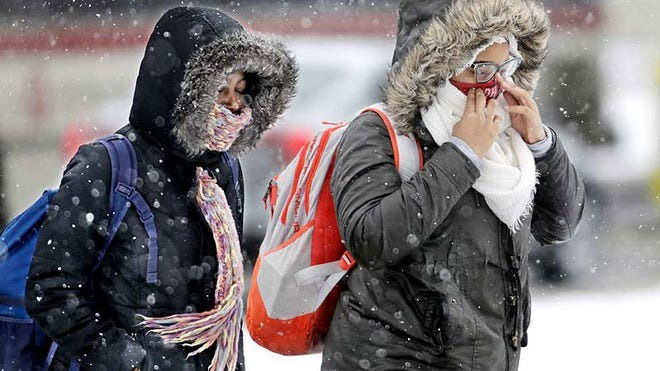
The weather in Bihar is gradually changing, with increasing temperatures across the state. In particular, Patna and 25 other districts are experiencing noticeable heat, leading to discomfort for many residents. According to weather experts, the temperature rise is expected to continue, and along with it, pollution levels may also escalate. This could potentially cause more challenges for the people of Bihar in the coming weeks.
Weather Shifts Across Bihar
As the days pass, the state’s weather is undergoing significant shifts. During the day, the sun’s warmth is causing a mild rise in temperature, while mornings and evenings continue to remain cool. This fluctuation in temperature has become a familiar feature of Bihar’s weather as it transitions from one season to another. The Patna Meteorological Centre has indicated that these changes will intensify in the upcoming week, with possible variations in wind patterns.
Impact of Winds on Temperature
Meteorologists predict that the temperature could rise slightly due to the effects of the “Purva” winds, a phenomenon that typically causes a mild increase in temperature. However, no significant fluctuations are expected over the next three to four days. In fact, the temperature trends for the next few days are likely to remain stable. The first week of November, however, is expected to bring cooler temperatures, signaling the onset of winter. Experts believe that the influence of La Niña will extend the colder weather for a more extended period, which will likely increase the frequency of cold waves.
Temperature Trends in Patna and Surrounding Areas
On Saturday, Patna and nearby regions saw a clear sky, with the sun shining brightly during the day. Despite the warmth during the day, the cool breeze in the mornings and evenings offered some relief. Patna recorded a maximum temperature of 32.5°C on Saturday, while Purnia experienced the highest temperature in the state, reaching 34.8°C. This increase in temperatures was observed across 25 districts, including the state capital. Many other districts, however, recorded a slight decrease in maximum temperatures compared to previous days.
Temperature Details of Key Cities
Patna: 32.5°C (maximum), 22.7°C (minimum)
Gaya: 31.7°C (maximum), 19.6°C (minimum)
Bhagalpur: 32.7°C (maximum), 22.6°C (minimum)
Muzaffarpur: 30.8°C (maximum), 23.3°C (minimum)
The temperature in these cities was above the normal levels for this time of year, indicating a marked shift in the usual seasonal patterns.
Air Quality Deteriorates with Rising Pollution
As the temperature begins to rise, the air quality in Bihar, especially in Patna, is starting to decline. The mornings and evenings bring increased humidity, which, in turn, enhances the suspension of dust particles in the air, leading to a noticeable rise in pollution levels. On Saturday, the Air Quality Index (AQI) levels were recorded as follows:
Taramandal area: AQI level of 163
DRM office, Danapur: AQI level of 106
Samnapura: AQI level of 188
These areas are now classified under the “Yellow Zone,” indicating moderate air pollution. Only a few days ago, these locations had AQI levels in the “Green Zone,” which reflects healthy air quality. Meanwhile, places like Rajwanshi Nagar and Muradpur recorded lower AQI levels of 85 and 50, respectively.
According to environmental experts, the amount of toxic gases in the air remains low for now. However, as the winter sets in, the likelihood of increased pollution is high. The combination of cooler temperatures and stagnant air can exacerbate the pollution levels in the state.
Pollution Concerns During the Festive Season
As Bihar prepares for the upcoming festivals, experts warn that the AQI levels are likely to spike further. During Diwali and other festivals, the bursting of firecrackers significantly contributes to the release of harmful gases and particulate matter into the atmosphere. This can cause severe deterioration in air quality, particularly in urban areas like Patna.
The stagnant air, combined with the increased humidity, will trap the pollutants, causing them to linger in the atmosphere. This trapped pollution will not only degrade the air quality but also make breathing difficult for people, especially those with respiratory conditions.
The weather in Bihar is shifting, with rising temperatures and an increased risk of air pollution in the coming weeks. As the state moves into the colder months, the impact of cooler weather, coupled with rising pollution levels, could pose significant challenges for residents. People must take necessary precautions to protect themselves from the harsh effects of pollution, especially as festivals like Diwali approach.
Experts advise residents to monitor the air quality regularly and limit outdoor activities when pollution levels are high. Additionally, health professionals recommend the use of air purifiers at home and wearing masks to protect against harmful particles in the air. It’s crucial for the government and local authorities to take swift action to curb pollution levels, especially during the festive season, to ensure the health and safety of the public.


